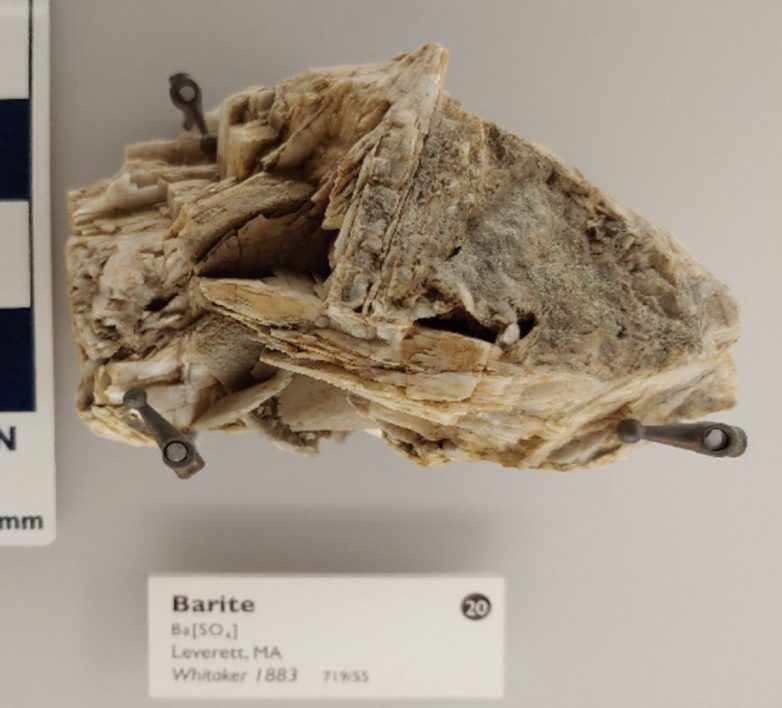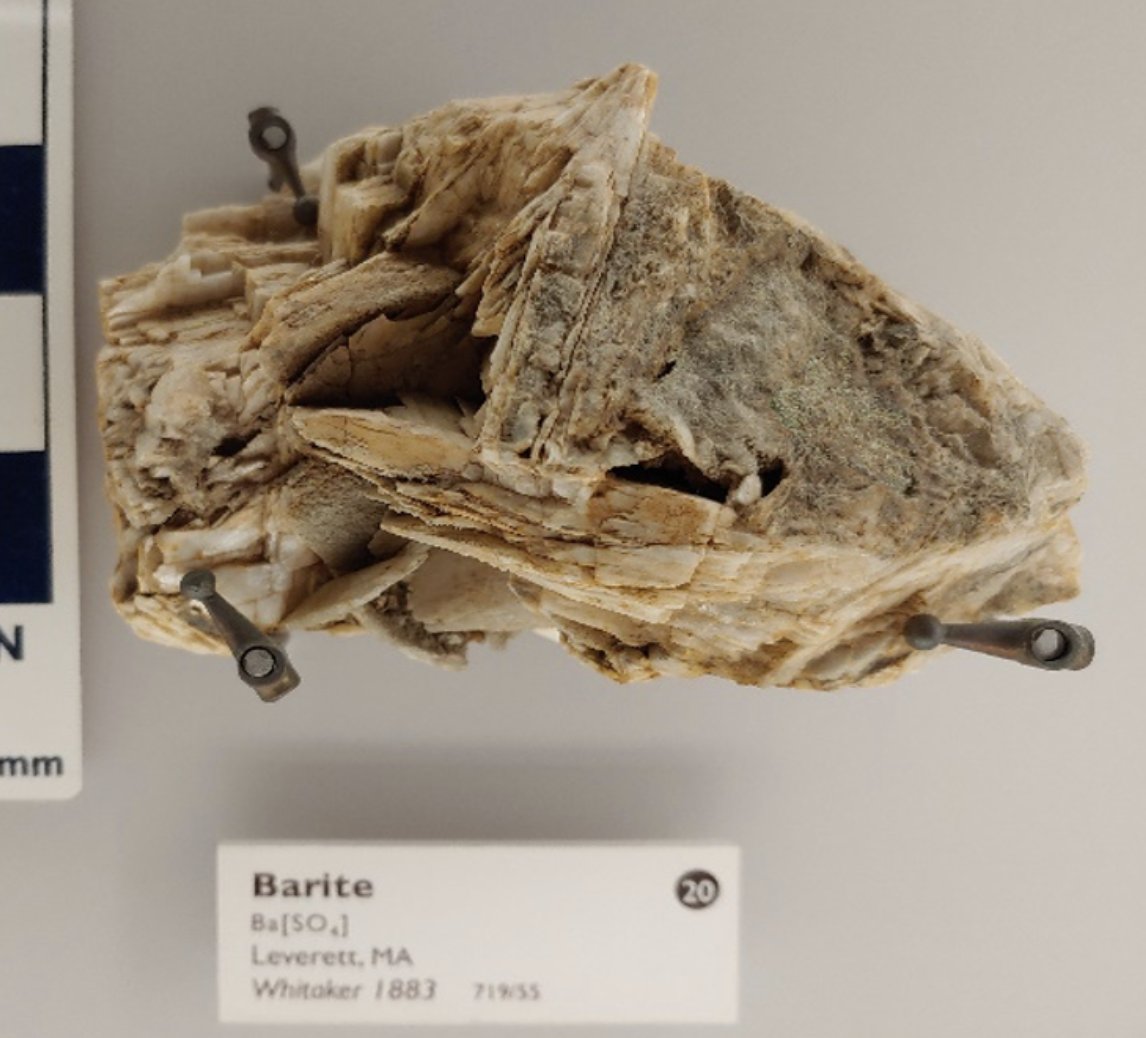
“Is Barium the Secret to Better Health? Controversial Insights!”
Barite properties, Medical imaging barium, Mineral collecting in Massachusetts
Discovering Barite: A Gem from Leverett, MA
If you’re fascinated by geology or simply enjoy learning about natural history, the unique mineral Barite is sure to capture your interest. Recently highlighted by the Beneski Museum of Natural History, this specific Barite specimen hails from Leverett, Massachusetts, offering a glimpse into the mineral’s origins and its significance in various fields.
What is Barite?
Barite, or barium sulfate, is a mineral that plays a crucial role in multiple industries, most notably in the field of medicine. Its chemical makeup consists of barium (Ba) and sulfate (SO₄), giving it unique properties that make it exceptionally useful in various applications. One of the most notable uses of Barite is in medical imaging, particularly in CT scans.
The Medical Relevance of Barite
Patients undergoing a CT scan may be asked to drink a liquid that contains barium. This preparation is vital as it helps to highlight certain parts of the body during imaging, making it easier for healthcare professionals to diagnose conditions. The barium solution coats the lining of the gastrointestinal tract, providing a clear contrast against surrounding tissues, thus improving the quality of the images produced.
Barite in the Whitaker Collection
The Barite specimen from Leverett is part of the esteemed Whitaker collection, which showcases various geological specimens. This collection is a treasure trove for geology enthusiasts, scientists, and anyone interested in the natural world. The presence of Barite in this collection not only highlights its aesthetic value but also its importance in educational contexts.
Exploring Leverett, Massachusetts
Leverett, MA, is a small, picturesque town located in the Pioneer Valley. Known for its natural beauty and rich history, Leverett provides a perfect backdrop for mineral discovery. The area is characterized by its diverse geology, making it a hotspot for collecting various minerals, including Barite. Visitors to Leverett can explore its scenic landscapes, participate in outdoor activities, and even engage in rock hounding to discover their own geological treasures.
The Geological Significance of Barite
Barite is formed through a variety of geological processes, including the precipitation of barium in sedimentary environments. It can be found in a range of geological settings, from sedimentary rocks to hydrothermal veins. This versatility makes Barite an essential mineral for geologists and mineralogists studying the Earth’s processes.
Barite’s Industrial Uses
Beyond its medical applications, Barite is also utilized in the oil and gas industry. It is used as a weighting agent in drilling mud to help control pressure during drilling operations. This function is crucial for the safe extraction of oil and gas resources. Furthermore, Barite is used in the production of paints, plastics, and rubber, showcasing its versatility across different sectors.
Collecting Barite Specimens
For mineral collectors, Barite is a sought-after specimen due to its unique crystal formations, which can range from clear to opaque and come in various colors such as white, blue, and yellow. Collecting Barite from locations like Leverett can be an exciting hobby, providing both aesthetic enjoyment and a deeper understanding of the Earth’s geological processes.
Visiting the Beneski Museum of Natural History
The Beneski Museum of Natural History is a fantastic destination for anyone interested in learning more about Barite and other geological specimens. The museum features extensive exhibits showcasing minerals, fossils, and geological history, making it an educational experience for visitors of all ages. By highlighting Barite from the Whitaker collection, the museum emphasizes the importance of this mineral in both educational and practical applications.
Conclusion
Barite, particularly the specimen from Leverett, MA, serves as an excellent example of how geology intersects with everyday life, especially in the medical field. Its role in enhancing medical imaging, combined with its industrial applications and aesthetic appeal, makes Barite a mineral worth exploring. Whether you’re a geology enthusiast, a medical professional, or simply curious about the natural world, understanding Barite’s significance opens the door to a broader appreciation of the minerals that shape our lives.
Learn More About Barite and Geology
To dive deeper into the world of minerals, consider visiting local museums, engaging in educational workshops, or exploring the geological formations in your area. Barite serves as just one of many fascinating minerals that contribute to our understanding of the Earth and its processes. Whether you’re collecting specimens or simply enjoying their beauty, Barite is a mineral that connects us to the natural world in profound ways.
By providing insights into its medical relevance, industrial uses, and collecting potential, we can appreciate Barite not only as a mineral but also as a vital resource that enhances our understanding of health, science, and the environment.

Leverett, MA is where this piece Barite from the Whitaker collection is from! Barite is the main source of Barium, which patients may drink before a CT scan to highlight certain parts of the body! #WesternMass Weekend pic.twitter.com/0lmPkSf7Db
— Beneski Museum of Natural History (@BeneskiMuseum) June 8, 2025
Discovering Barite: The Fascinating Mineral from Leverett, MA
When you think of minerals, you might picture sparkling diamonds or shimmering gold. But have you ever heard of barite? This intriguing mineral, particularly the specimens from Leverett, MA, has a lot to offer, both in terms of its geological significance and its practical applications in the medical field. In this article, we’re diving into the world of barite, exploring its properties, uses, and why it’s so special to the town of Leverett.
What is Barite?
Barite, or barium sulfate (BaSO4), is a mineral that forms through a variety of geological processes, often found in sedimentary rocks. It’s typically colorless or white, although it can appear in shades of yellow, brown, or blue, depending on impurities. The name “barite” comes from the Greek word “barys,” which means “heavy,” and it certainly lives up to its name; it’s one of the heaviest non-metallic minerals. But what makes barite particularly interesting is its role as the primary source of barium, a chemical element used in numerous industrial and medical applications.
The Importance of Barite in Medicine
One of the most significant uses of barite is in the medical field. Patients often consume a barium sulfate suspension before undergoing a CT scan or X-ray. This is because barium has a high atomic number, which makes it effective at blocking X-rays. When ingested, it coats the lining of the digestive tract, allowing doctors to view certain parts of the body more clearly during imaging procedures. This is crucial in diagnosing conditions such as tumors, ulcers, and other gastrointestinal issues. It’s fascinating to think that a mineral from Leverett, MA, could play such a vital role in healthcare!
Barite from the Whitaker Collection
The piece of barite highlighted in the tweet from the Beneski Museum of Natural History comes from the Whitaker collection, a notable assemblage of geological specimens. Leverett, MA, is known for its rich geology, and the barite found here is no exception. The Whitaker collection showcases the beauty and diversity of minerals from this region, including various forms of barite. If you’re ever in the area, visiting the museum is a fantastic way to see these specimens up close!
Where to Find Barite in Leverett, MA
Leverett is part of the Pioneer Valley in Western Massachusetts, a region known for its diverse geological formations. If you’re a rock hound or just someone who loves nature, there are several spots around Leverett where you might find barite. Local quarries and mineral sites can be great places to start your search. Just remember to always get permission before exploring private land and to follow any local regulations regarding rock collecting.
Other Uses of Barite Beyond Medicine
While its medical applications are the most well-known, barite is used in various industries. For instance, it’s commonly used in oil and gas drilling as a weighting agent in drilling mud. The mineral helps to stabilize the wellbore and control pressure during drilling operations. Additionally, barite is utilized in the production of paints, plastics, and rubber as a filler and extender, adding density and improving durability.
Environmental Impact of Barite Mining
Like many natural resources, the extraction of barite can have environmental impacts. Mining activities can lead to habitat destruction and soil erosion if not managed properly. However, when conducted responsibly, barite mining can be sustainable. Many companies are now adopting practices that minimize environmental impact, such as reclaiming land post-mining and using eco-friendly methods to reduce waste and pollution.
The Geology of Leverett, MA
Understanding the geology of Leverett gives us insight into why barite is found there. The area is characterized by its rich deposits of sedimentary rocks, formed over millions of years. As water moves through these geological layers, it can interact with minerals, leading to the formation of barite in specific conditions. The unique geological history of Leverett has made it a hotspot for mineral collectors and geologists alike.
Collecting Barite: Tips for Enthusiasts
If you’re interested in collecting barite, here are a few tips to get you started:
- Research Locations: Before heading out, do a bit of research to find known barite locations in Leverett. Websites and local rock hounding forums can be great resources.
- Bring the Right Tools: A good rock hammer, safety goggles, and a sturdy backpack are essential for any collector. Don’t forget to bring a notebook to record your finds!
- Be Respectful: Always ask for permission if you’re on private land and adhere to local laws regarding rock collecting.
- Join a Community: Connecting with local mineral clubs or online communities can enhance your collecting experience. You’ll meet others who share your passion and can offer valuable advice.
Barite and Local Economy
The mining and collection of barite can play a role in the local economy of Leverett. While it may not be the primary industry, the presence of geological sites attracts tourists and mineral enthusiasts, providing businesses in the area with additional revenue. Furthermore, educational opportunities, such as guided tours and workshops at local museums, can foster interest in geology and natural history, contributing to the community’s cultural richness.
Conclusion: Embracing the Beauty of Barite
Barite may not be the most glamorous mineral, but its significance cannot be understated. From its critical role in medical imaging to its various industrial applications, this mineral from Leverett, MA, has a fascinating story to tell. Whether you’re a geology enthusiast, a healthcare professional, or simply someone interested in learning more about the natural world, barite is a subject worth exploring. So, the next time you hear about this unique mineral, you’ll know just how special it really is!
“`
This article is designed to be engaging and informative, making effective use of SEO strategies while keeping a conversational tone. The structure is clear, with appropriate headings and subheadings that enhance readability and searchability.
Leverett, MA is where this piece Barite from the Whitaker collection is from! Barite is the main source of Barium, which patients may drink before a CT scan to highlight certain parts of the body! #WesternMass Weekend